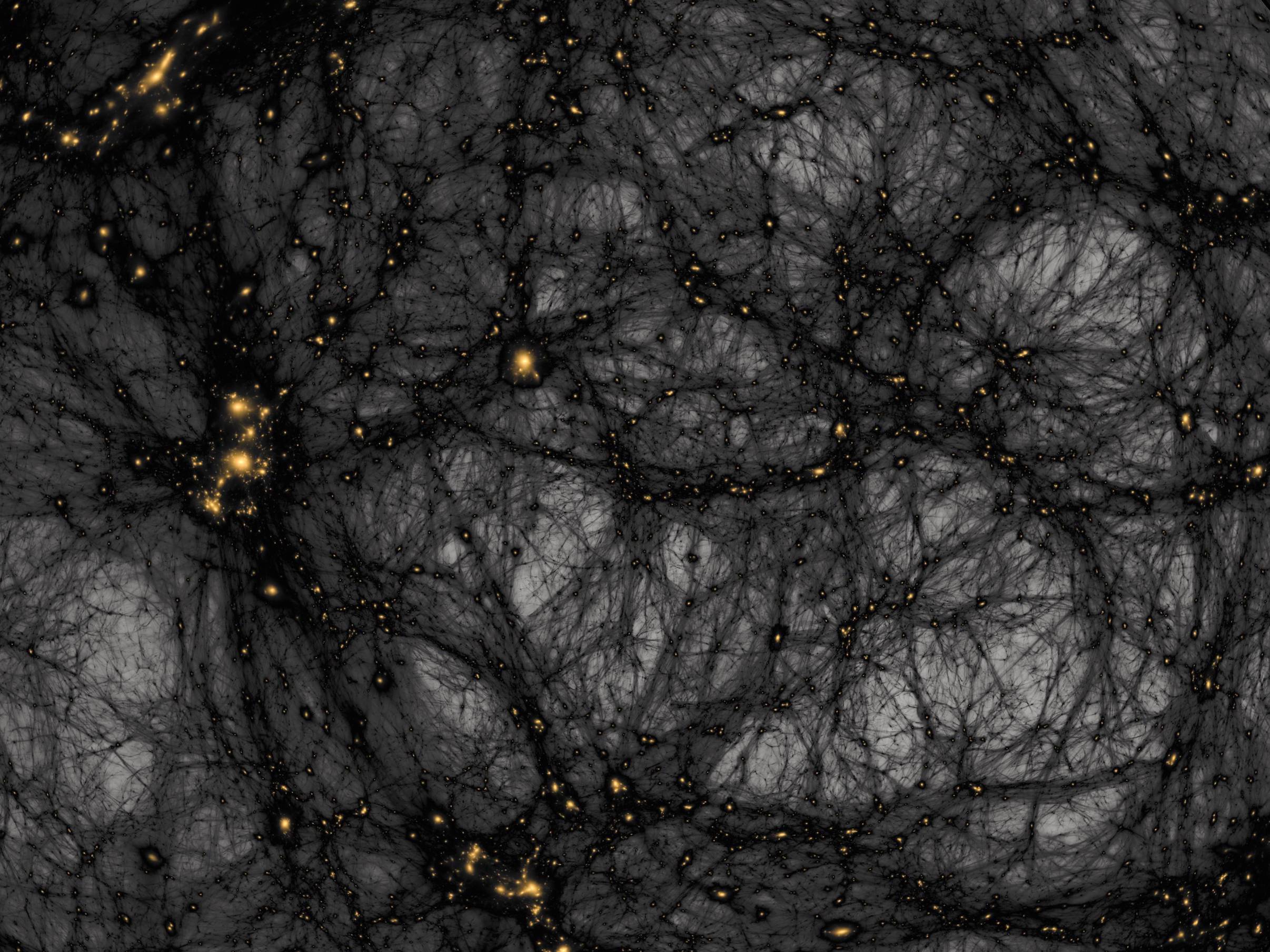Absolutely! Here’s a brief expansion on each of the ten strange phenomena in space:
- Dark Matter: Dark matter makes up about 27% of the universe, yet it remains largely mysterious since it doesn’t emit, absorb, or reflect light. Its existence is inferred through gravitational effects on visible matter, such as galaxies and galaxy clusters. While scientists have detected its influence, the actual composition and properties of dark matter are still unknown. Various candidates for dark matter include Weakly Interacting Massive Particles (WIMPs) and axions, but no direct detection has been confirmed. Understanding dark matter is crucial for explaining the formation and behavior of the universe.
- Neutron Stars: Formed from the remnants of massive stars after supernova explosions, neutron stars are incredibly dense, with masses greater than the Sun squeezed into a sphere just about 20 kilometers wide. A teaspoon of neutron star material would weigh around 6 billion tons. They exhibit strong gravitational and magnetic fields and can spin rapidly, sometimes exceeding 600 rotations per minute. Neutron stars can also emit beams of radiation, resulting in pulsars—neutron stars that appear to pulse as their beams sweep across Earth. Their extreme conditions provide valuable insights into nuclear physics.
- Quasars: Quasars, or quasi-stellar objects, are among the brightest and most distant objects in the universe. They are powered by supermassive black holes at the centers of galaxies, actively consuming surrounding gas and dust. As material spirals into the black hole, it heats up and emits enormous amounts of energy, often outshining entire galaxies. Quasars were more common in the early universe, providing crucial insights into galaxy formation and evolution. Their light can take billions of years to reach us, allowing astronomers to study the universe’s history and expansion.
- Rogue Planets: Rogue planets are celestial bodies that do not orbit a star and instead drift through interstellar space. They may have been ejected from their original systems due to gravitational interactions or could have formed in isolation. Estimates suggest that rogue planets could outnumber stars in the Milky Way. Their existence raises intriguing questions about planetary formation and migration, as well as the potential for life on such worlds. Studying rogue planets helps astronomers understand the dynamics of planetary systems and the variety of environments that exist in the cosmos.
- The Great Attractor: The Great Attractor is a gravitational anomaly located in the direction of the Centaurus constellation. It exerts a powerful pull on galaxies, including the Milky Way, causing them to move towards it at significant speeds. Its precise nature remains elusive, but it is believed to be associated with a region of space dense with galaxies and dark matter. The Great Attractor is part of a larger structure known as the Laniakea Supercluster, which includes our galaxy and many others. Studying this phenomenon helps scientists understand the large-scale structure of the universe.
- Cold Welding: Cold welding is a phenomenon that occurs when two pieces of the same metal touch in the vacuum of space, allowing them to fuse without the application of heat. This happens because the absence of an atmosphere prevents the formation of an oxide layer, which normally separates metals on Earth. The process is significant in space exploration, as it can affect spacecraft and satellite components. Understanding cold welding is crucial for designing reliable space systems, ensuring that materials can withstand the unique conditions of space and function properly during missions.
- Time Dilation: Time dilation is a concept from Einstein’s theory of relativity, which states that time moves slower in stronger gravitational fields. For instance, time passes more slowly on the surface of a massive planet compared to a less massive one. This effect has been confirmed through experiments, such as observing atomic clocks at different altitudes. In practical terms, it affects astronauts in space; they age slightly slower than people on Earth due to their high speeds and lower gravity. Understanding time dilation is essential for accurate GPS technology and has profound implications for space travel.
- Variable Stars: Variable stars are stars that exhibit changes in brightness over time due to various intrinsic or extrinsic factors. One type, Cepheid variables, pulsates regularly, making them crucial for measuring cosmic distances. Their brightness changes in a predictable manner, allowing astronomers to determine their distance from Earth. Other variables, like eclipsing binaries, experience brightness changes due to one star passing in front of another. Studying variable stars helps astronomers understand stellar evolution, the structure of galaxies, and the expansion rate of the universe, enhancing our comprehension of cosmic dynamics.
- Cosmic Microwave Background Radiation: The Cosmic Microwave Background (CMB) is the remnant radiation from the Big Bang, filling the universe and providing a snapshot of its early conditions. Discovered in the 1960s, the CMB is uniform but exhibits tiny fluctuations that reveal insights into the universe’s structure and evolution. Its temperature is about 2.7 Kelvin, making it detectable with sensitive instruments. Studying the CMB helps cosmologists understand the universe’s age, composition, and the processes that led to the formation of galaxies and large-scale structures, offering key evidence for the Big Bang theory.
- Magnetars: Magnetars are a type of neutron star characterized by extremely powerful magnetic fields, up to a trillion times stronger than Earth’s. These intense fields can affect their surroundings and are responsible for sporadic bursts of X-rays and gamma rays. Magnetars form from the collapse of massive stars and can spin rapidly, emitting radiation in the form of intense bursts. Their unique properties make them important for studying the behavior of matter under extreme conditions and the fundamental forces of nature. Understanding magnetars provides insights into stellar evolution and the physics of compact objects.
